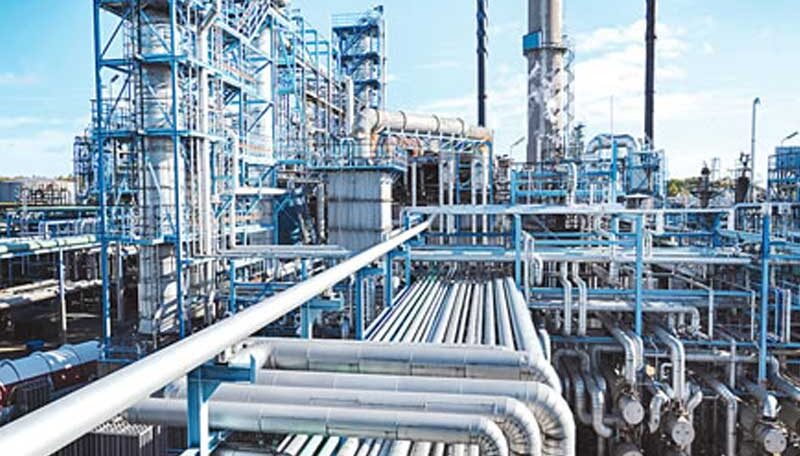In this article, we will delve into the threats facing the oil and gas industry, exploring their causes, consequences, and solutions.
The oil and gas industry is facing an unprecedented array of threats that imperil its very existence. These threats are multifaceted, interconnected, and far-reaching, impacting every aspect of the industry’s operations, profitability, and long-term sustainability.
Environmental and Climate Change Concerns
The oil and gas industry is under siege from growing concerns about climate change, carbon emissions, and environmental degradation. The industry’s role in contributing to greenhouse gas emissions and climate change has sparked widespread criticism, protests, and calls for urgent action. Governments, investors, and consumers are increasingly demanding that the industry transition to cleaner, more sustainable energy sources.
Renewable Energy and Alternative Sources
The rise of renewable energy sources, such as solar and wind power, and alternative energy sources, like hydrogen fuel cells, poses a significant threat to the oil and gas industry’s dominance. As technology improves and costs decline, renewables are becoming increasingly competitive, eroding the industry’s market share and profitability.
Compliance and Legal Risks
Increasing regulatory requirements, legal challenges, and compliance issues pose significant threats to the industry. The industry must prioritize compliance, risk management, and legal expertise to mitigate these risks.
Economic and Market Volatility
Fluctuations in global demand, prices, and economic conditions can impact the industry’s profitability and long-term sustainability. The industry must navigate these uncertainties through strategic planning, risk management, and diversification.
Regulatory and Political Risks
The oil and gas industry operates in a complex, ever-changing regulatory landscape. Governments, responding to public pressure and environmental concerns, are implementing stricter regulations, taxes, and policies aimed at curbing the industry’s impact. Political risks, including trade wars, sanctions, and geopolitical tensions, further complicate the industry’s operations and profitability.
Technological Disruptions
Advances in technology, such as electric vehicles, energy storage, and digitalization, are disrupting traditional business models and operations. The industry must adapt to these changes or risk being left behind, facing significant losses in market share and revenue.
Cybersecurity Threats
The oil and gas industry’s increasing reliance on digital technologies makes it vulnerable to cyberattacks, data breaches, and other cybersecurity threats. These threats can compromise sensitive information, disrupt operations, and damage the industry’s reputation.
Supply Chain Disruptions
Disruptions to supply chains, including logistics, transportation, and procurement, can impact operations and profitability. The industry must mitigate these risks through diversification, contingency planning, and strategic partnerships.
Reputation and Public Perception
Negative public perception, fueled by environmental concerns, accidents, and controversies, can damage the industry’s reputation and influence policy decisions. The industry must prioritize transparency, accountability, and sustainability to restore public trust and credibility.
READ: GLOBAL ENERGY SECURITY
In addition to the threats mentioned earlier, the oil and gas industry also faces:
- Infrastructure Risks: Aging infrastructure, lack of investment, and maintenance challenges can lead to accidents, spills, and disruptions.
- Geopolitical Risks: Political instability, conflicts, and sanctions can impact operations, supply chains, and market access.
- Currency Fluctuations: Volatile currency markets can affect revenue, profitability, and investment decisions.
- Trade Agreements and Tariffs: Changes in trade agreements and tariffs can impact market access, costs, and competitiveness.
- Public Health Concerns: The industry’s impact on public health, including air and water pollution, can lead to increased regulation and liability.
- Indigenous Rights and Community Opposition: Growing concerns about indigenous rights, land use, and community opposition can delay or block projects.
- Technological Obsolescence: Rapid technological change can render existing infrastructure, equipment, and processes obsolete.
- Cybersecurity Regulations: Increasing cybersecurity regulations and standards can require significant investment and compliance efforts.
- Data Management and Analytics: The industry’s ability to manage and analyze vast amounts of data can impact operational efficiency, decision-making, and innovation.
- Workforce Diversity and Inclusion: The industry’s ability to attract, retain, and develop a diverse and inclusive workforce can impact innovation, productivity, and reputation.
To address these threats, the oil and gas industry must adopt a proactive, innovative, and sustainable approach to operations, risk management, and strategic planning. This includes:
– Investing in renewable energy and low-carbon technologies
– Enhancing operational efficiency and cost management
– Developing strategic partnerships and collaborations
– Improving cybersecurity and data management capabilities
– Fostering a diverse and inclusive workforce
– Engaging with stakeholders and communities
– Prioritizing environmental sustainability and social responsibility
By taking these steps, the oil and gas industry can navigate the complex landscape of threats and opportunities, ensuring a prosperous and sustainable future.

